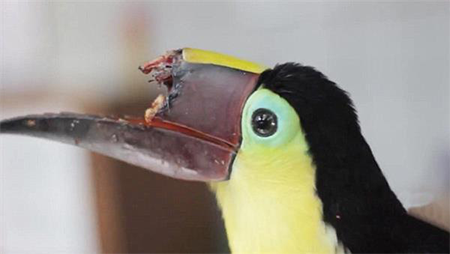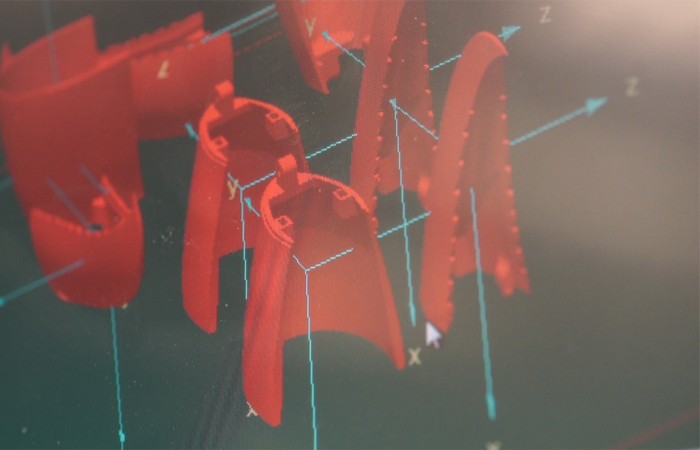It is an undeniable fact that many medical procedures get easier with digital technologies. Thanks to these technologies many people and animals get a new organ with prosthesis and organ printing. Toucan Grecia from Costa Rica is among these creatures regaining mobility thanks to 3D printed organ.
Since 3D printing got into our lives, we came across with many successful 3D printed organ projects for many creatures from a turtle to dog. The last example of this is the cute Toucan that lost its upper beak during an attack. The bird now welcomed a brand new beak thanks to 3D Systems technologies.
 In collaboration with a group of industrial designers, dentists and nanotechnology experts, 3D Systems transformed the 3D scans from Grupo SG into a viable prosthetic beak for Grecia. Using and end-to-end digital manufacturing workflow, the team started with Geomagic Wrap® software to convert 3D scan data from Grecia’s residual beak as well as the beak of an undamaged toucan into feature-based CAD models. These models were then imported into Geomagic® Freeform® organic 3D modeling software where the necessary mechanical features were incorporated. These features would allow the prosthetic to properly attach and function.
In collaboration with a group of industrial designers, dentists and nanotechnology experts, 3D Systems transformed the 3D scans from Grupo SG into a viable prosthetic beak for Grecia. Using and end-to-end digital manufacturing workflow, the team started with Geomagic Wrap® software to convert 3D scan data from Grecia’s residual beak as well as the beak of an undamaged toucan into feature-based CAD models. These models were then imported into Geomagic® Freeform® organic 3D modeling software where the necessary mechanical features were incorporated. These features would allow the prosthetic to properly attach and function.
As 3D Systems explained, a whole team of Costa Rican product designers, dentists and nanotechnology experts were brought in on this collaborative project, and gave advise on the best available materials and technology to not only ensure a perfect fit but also to prevent poisoning. “In addition to fitting Grecia’s residual anatomy, the beak needed to be strong, biocompatible and have a smooth surface finish that would not promote contamination or encourage bacteria growth,” they explained. In the end, they settled on DuraForm ProX PA plastic, which can be 3D printed on 3D Systems’ ProX SLS 500 3D printer.
